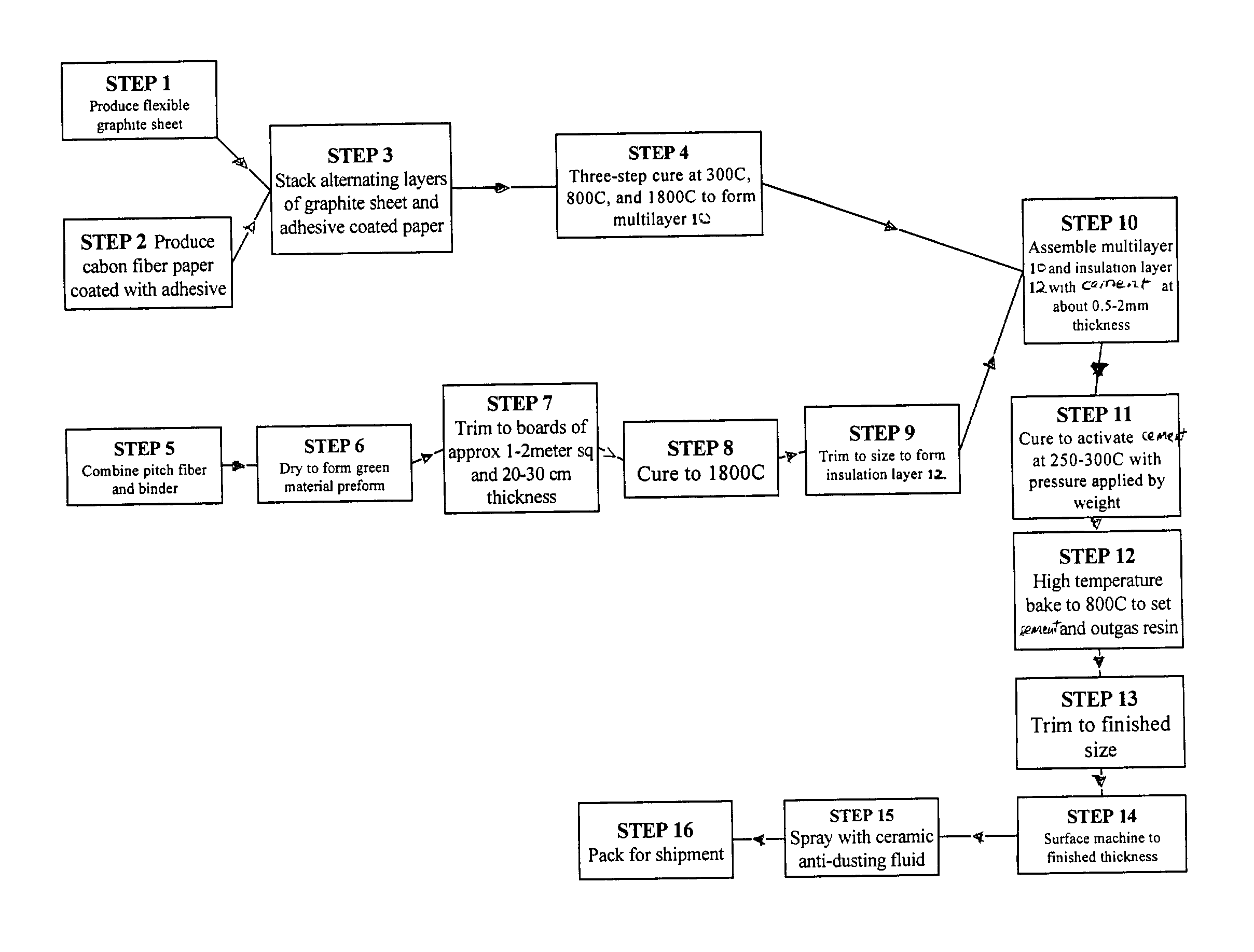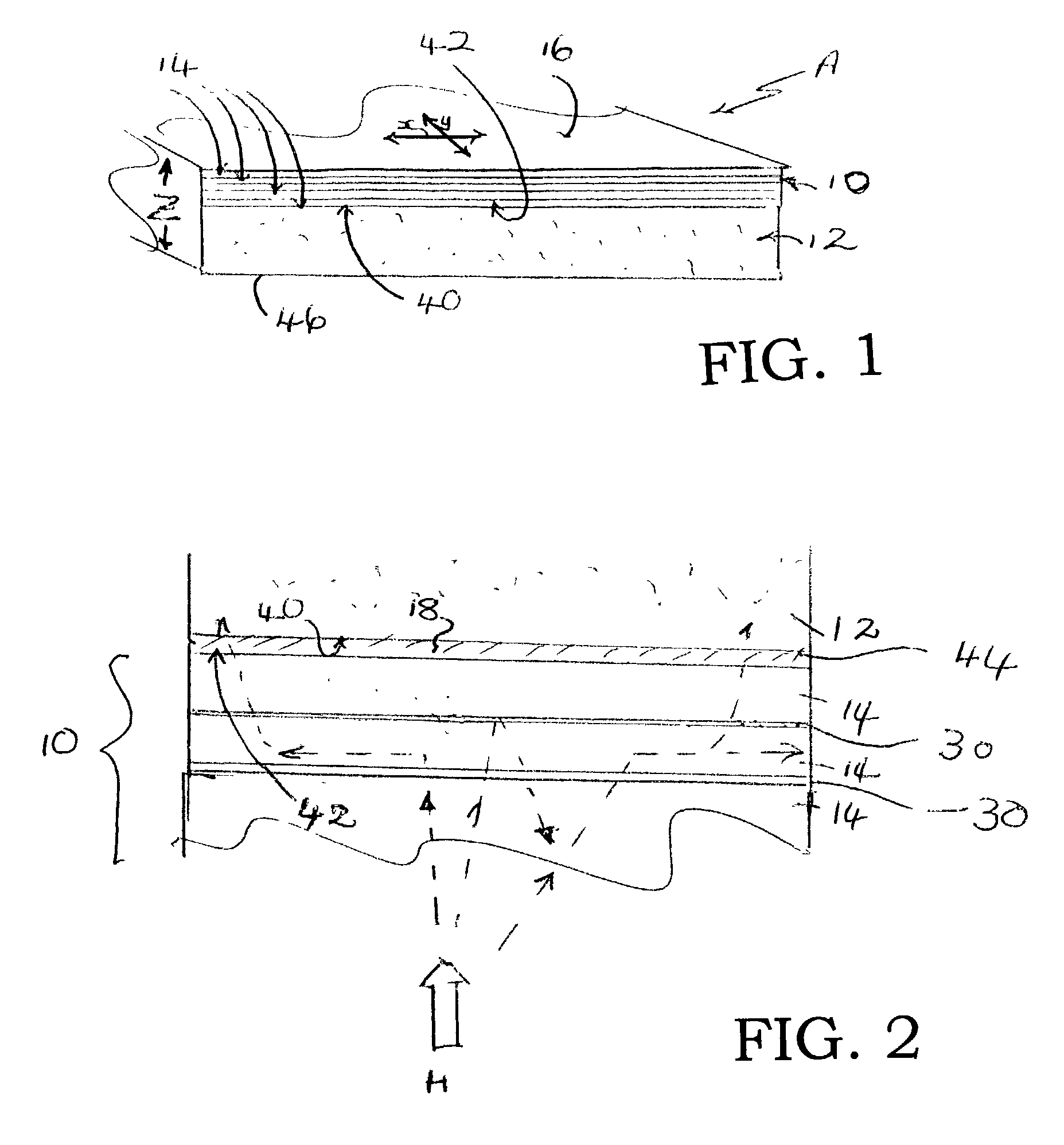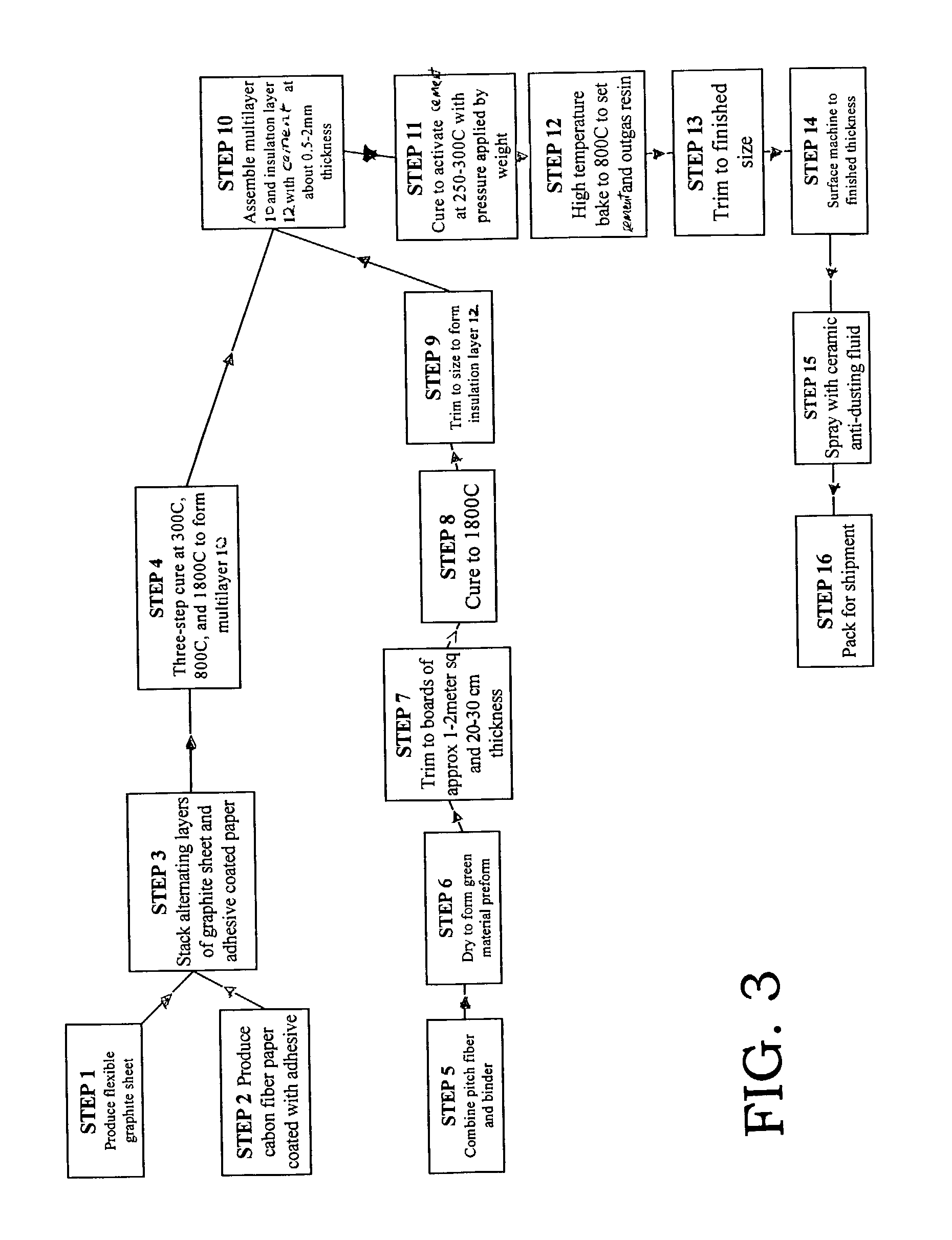Composite high temperature insulator
a high-temperature insulation and composite technology, applied in the field of composite materials, can solve the problems of low strength of materials, hot spots can occur, and slow dissipation of conductive heat in the plane of sheets,
- Summary
- Abstract
- Description
- Claims
- Application Information
AI Technical Summary
Benefits of technology
Problems solved by technology
Method used
Image
Examples
Embodiment Construction
[0077] A layer 10 about 0.535 cm thick was formed from about 6 layers 14 of GRAFOIL.RTM. sheets sandwiched together with alternating layers of kraft paper 20 coated on both sides with a phenolic resin 22, 24. The layered assembly was subjected to a three step cure at 300.degree. C., 800.degree. C., and 1800.degree. C. to form layer 10. The thermal conductivity of layer 10 was 3W / m.multidot.K in the z direction and 140 W / m.multidot.K in the plane of the layer (x and y directions).
[0078] Rigid insulation material for layer 12 was formed from pitch fibers and a binder, which was cured to a final temperature of 1800.degree. C. in a non-oxidizing atmosphere. The rigid insulation material had a thickness of 1.605 cm and a thermal conductivity of 0.2 W / m.multidot.K in the z direction and 0.2 W / m.multidot.K in the plane of the layer (x and y directions).
[0079] Layer 12 was attached to layer 10 with a cement paste composition comprising 20 to about 60 wt. % of a carbon filler, 7 to about 30 ...
PUM
| Property | Measurement | Unit |
|---|---|---|
| Linear density | aaaaa | aaaaa |
| Thickness | aaaaa | aaaaa |
| Thickness | aaaaa | aaaaa |
Abstract
Description
Claims
Application Information
 Login to View More
Login to View More - R&D
- Intellectual Property
- Life Sciences
- Materials
- Tech Scout
- Unparalleled Data Quality
- Higher Quality Content
- 60% Fewer Hallucinations
Browse by: Latest US Patents, China's latest patents, Technical Efficacy Thesaurus, Application Domain, Technology Topic, Popular Technical Reports.
© 2025 PatSnap. All rights reserved.Legal|Privacy policy|Modern Slavery Act Transparency Statement|Sitemap|About US| Contact US: help@patsnap.com



